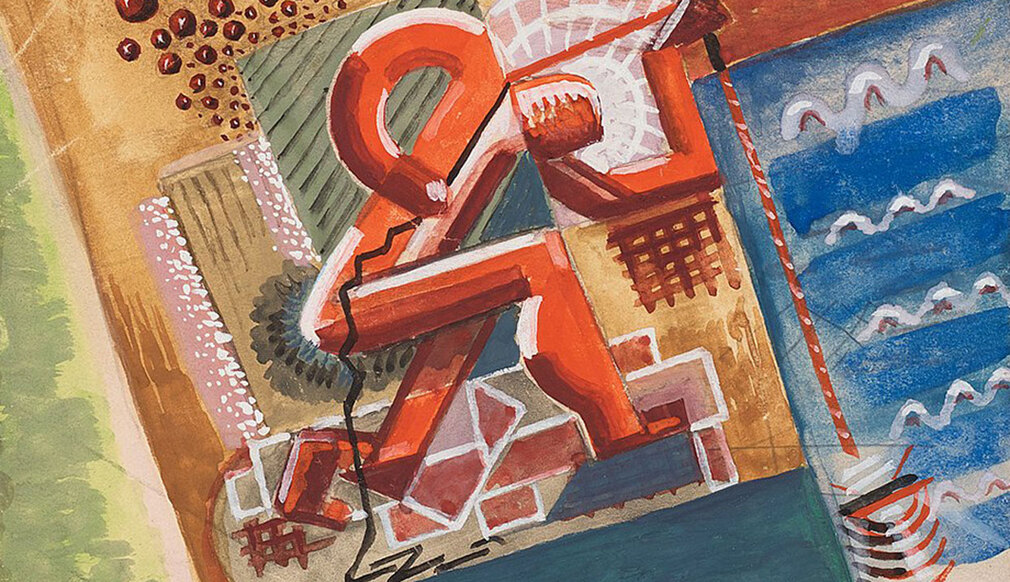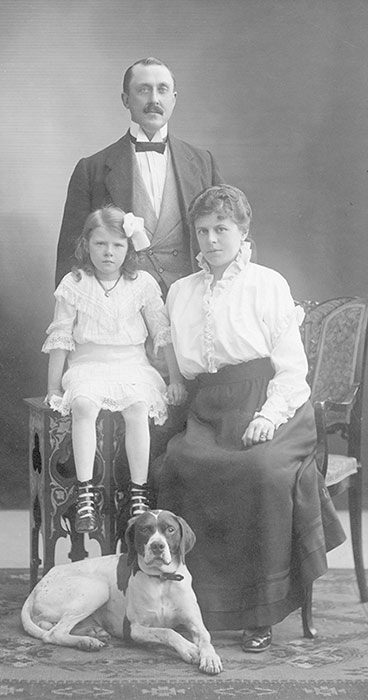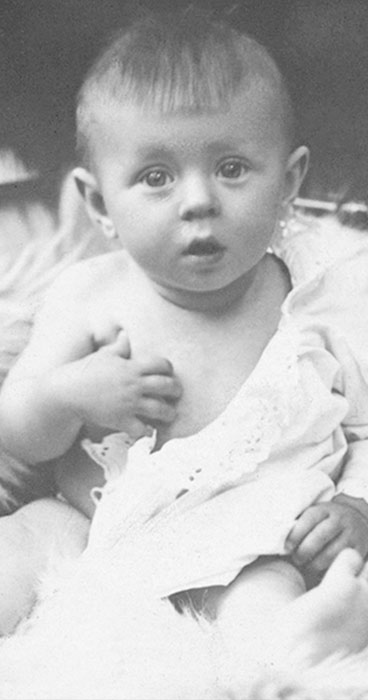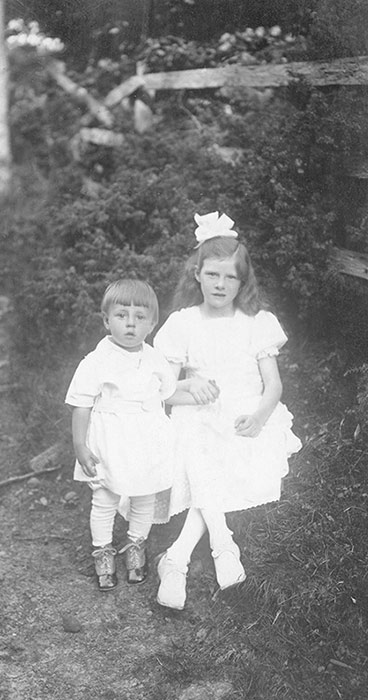Bukowskis Presents Selected Works by CO Hultén
CO Hultén Final selection 1937–1959
As one of the central figures in the avant-garde group The Imaginists, formed in 1945, CO Hultén holds a significant place in Swedish art history. In 1948, he also joined the CoBrA group, which included, among others, Asger Jorn. CO Hultén was also the driving force behind two other influential projects: Image Publishing, which he founded in 1947, and the magazine Salamander, which was published in three issues between 1955 and 1956. Salamander contained texts, poems, and visual material by figures such as Tomas Tranströmer, Marcel Duchamp, Roberto Matta, and André Breton, as well as lithographic originals showcasing the initiators' unique international network. Concurrently with Salamander, Hultén opened Galerie Colibri in Malmö in January 1955 – likely the city's first artist-run exhibition space.
Bukowskis are proud to once again be entrusted with selling selected works from CO Hultén's estate, dating from 1930 to 1950. These works represent a unique opportunity to acquire art from one of Sweden's most influential post-war artists. Many of these pieces have never been exhibited before, making this a unique chance to acquire artwork by one of the most significant post-war artists in Sweden, who is also esteemed and recognized internationally.
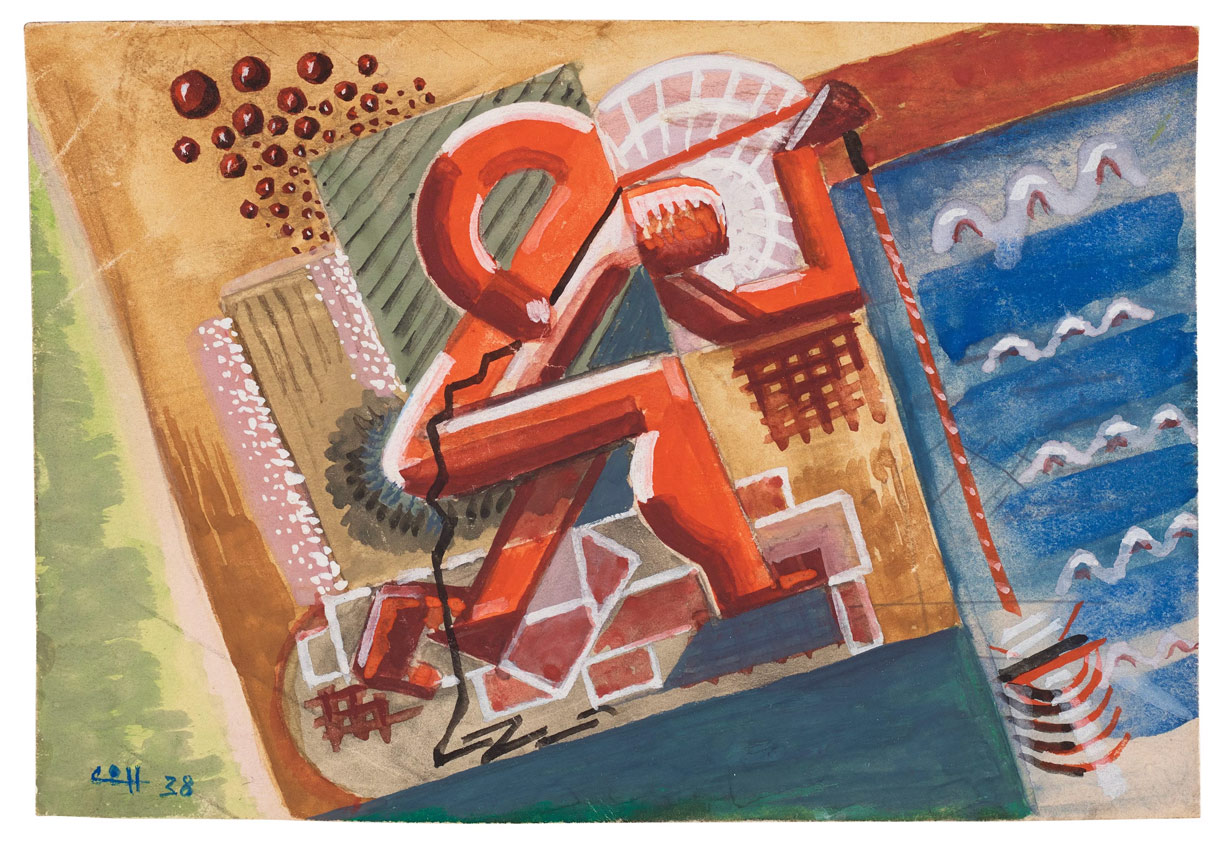
› CO Hultén, "Pilking". Dated 1938. Gouache 10.5 x 15 cm.
The art of procrastination and perdition – the beginning and fantastic imaginations
It has been unexpectedly difficult and recurring postponement for me to write this text to the auction catalog for CO Hultén Final selection 1937–1959 (Bukowskis 2024, March 20–24). I have had many thoughts about why this happened. Some thoughts over and above a long-standing tendency to get started only in the threatening proxi- mity of deadlines and final submission dates. Thoughts that contain both free - purely spectacular - associations and more well-founded psychological hypotheses.
Is there anything unsettling about quitting? Not entirely comfortable with a ”final” selection? Shouldn’t everything just be saved for eternal times?
Equally, it hardly seems adequate to dedicate the text in the present catalog to the question of why it was unex- pectedly difficult - and procrastinated - for me to write.
Then I saw that there is a large exhibition of works by Caspar David Friedrich (1774–1840) in Hamburg and took myself to pick up the catalog - which was a much appreciated gift for my dad - from the exhibition Caspar David Friedrich - the spirited nature at the Nationalmuseum October 2009–January 2010.

› CO painting, hotel room in Paris 1947.
At first glance, it might seem strange that CO - and also other imaginists/surrealists - appreciated this (roman- tic?) late 18th/early 19th century painter. In truth, however, his work is often imaginative and I find a quote that reminds me of another quote, from another artist. Caspar David Friedrich writes:
“Close your physical eye, so that you first perceive the image with the help of your spiritual eye. Conjure up what you have seen in the dark in such a way that it can affect others from the outside in.” (Caspar David Friedrich, exhibition catalog 2009, p 7).
There is certainly a certain kinship between this position and the one expressed by my dad more than 100 years later in the article The Postponed Revolution:
”Observations from the outside world are continuously introduced to the brew from which the essence of the image comes. These are never illustrated illustratively because they merge with the inner experience... What the artist will concretize can therefore be considered a symbol of the whole inner picture.” (Hultén (1950), Lundagård, no. 6, p. 122).
But well; After all, CO is mainly a modernist - not a romantic traditionalist - perhaps almost postmodernist, so maybe a visit to Moderna Museet and its current exhibition Pink Sails - Swedish Modernism in Moderna Museet’s collection can be inspiring. However, what is shown and highlighted will probably rather be beyond what inspired the young artists in the 1930s and 1940s in Malmö. As is well known, Malmö is much closer to Copenhagen than to Stockholm. And maybe Paris or Amsterdam could also feel closer to Malmö than Stockholm, everything south, ”Malmö is closer to the continent” as dad used to say.
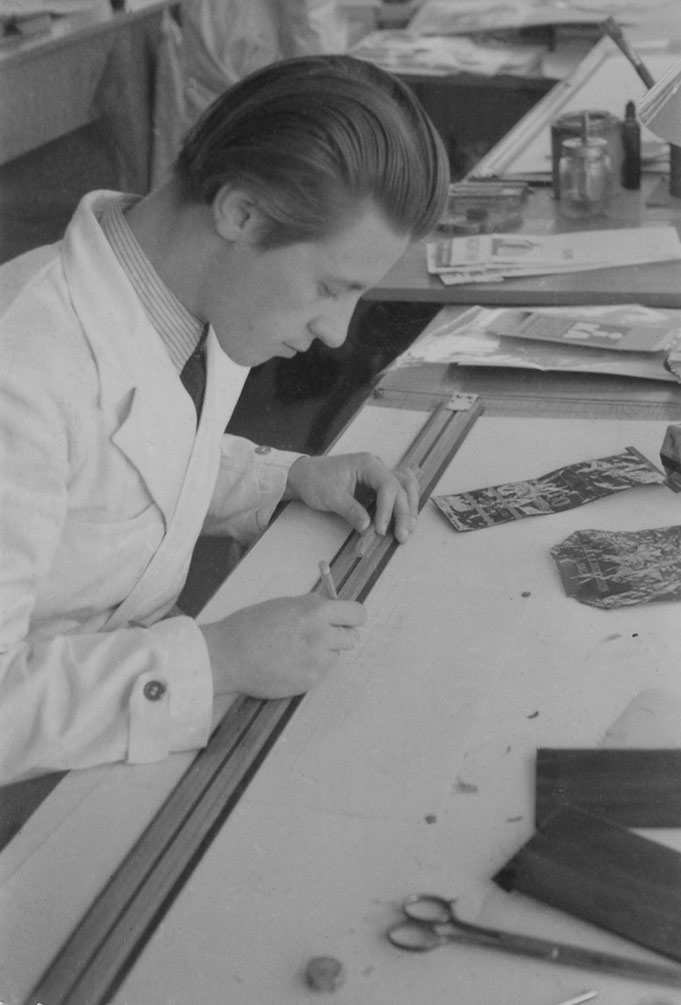
› At the drawing table, Åkerlund & Rausing, Malmö 1936.
So my visit to the Moderna Museet in Stockholm was not quite as inspiring as I had somewhat optimistically hoped for. Perhaps it reminded too much of the experience of how the Imaginists perceived that the ”Mälardalen” (the valley of lake Mälaren) overlooked them. And possibly also missing CoBrA, in their opinion. But here I’m gues- sing, speculating and venturing into areas that are beyond my competence, even though the art historian Folke Edwards writes:
”The fact that [CO Hultén] did not receive the recognition he deserved from the capital’s art establishment is proba- bly mainly due to the fact that he followed his own ’European’ and ’African’ path and did not follow the trendsetters’ American guide.” (Edwards, F. (2000), p. 124)
No, I will certainly not here - nor would I last week - or perhaps ever - venture into the higher spheres of art history or deal with the more or less serious artistic skirmishes that took place in Europe - and in Sweden - at the same time as World War II. And some time after that...
No, I would find photographs of my father - or the artist Carl Otto - from the time period 1937 - 1959. Also then found something else - that beyond, elsewhere, aside, but still absolutely connected with...

› The Imaginist’s exhibits at Galerie du Babylone, Paris 1953.
Just as I was swept along in the tracks of the massive creativity, the intense creation that the works now up for auction bear witness to from the 1930s and 1940s, I was also swept along in a vertiginous mental timetravel with these images from the undeniable begin- ning . These glances. This context. The world that is there and our projection of seeing out of that world – out of these photographs.
At the top left is a photograph from 1915/1916 of the family (and hunting dog) – father Otto, mother Gunhild and older sister Greta (born 1910) – in which eventually Carl Otto Helmer will born into on October 9, 1916. Next to this a photograph which according to text on the back is Carl Otto Helmer in 1917. To the right is Carl Otto and older sister Greta, probably 1920. Finally, bellow is a section from a group photograph which is probably from about 1926 and makes it extremely understandable how it could come said that the nickname ”Putte” (Lilliputtian) arose.
So it is not only with some trepidation that I seek to manage and handle the artistic legacy, but also with a sense of responsibility for an en- tire family heritage and history. The extent of my artifact hoarding is not totally unlike my father’s. But there must be limits to saving...
I believe that now is both a urgent and appropriate time to, in a da- ring agreement with my father, pay tribute to the 150 works in this ”final selection 1937 - 1959” as a probably very real - and powerful - confirmation of how ”the dynamic avalanche that is set in motion by the artist, continues in the work process, progresses through the material, through the object’s relationship to the formal dress and to each other to finally roll on through the viewer. This expansion of mo- vement begins every time a brush is put to the canvas and that is the strange thing – every time a work of art is viewed.” (bold by me) (Hultén, C.(1950), Lundagård, no. 6, p. 122).
– Ib Hultén 02-13-2024
Sources
Hultén, C.O. (1950). The postponed revolution, the journal Lundagård, no. 6, 15 April 1950, pp. 120–122.
Edwards, F, (2000). From modernism to postmodernism – Swedish art 1900–2000, The book publisher Signum, Lund. Kristianstads Printing house Ltd, Kristianstad.
Gunarsson, Torsten (ed), (2009). Caspar David Friedrich – the spirited nature, exhibi- tion 2 October 2009–10 January 2010, National Museum exhibition catalog no. 660. Press Fälth & Hässler.
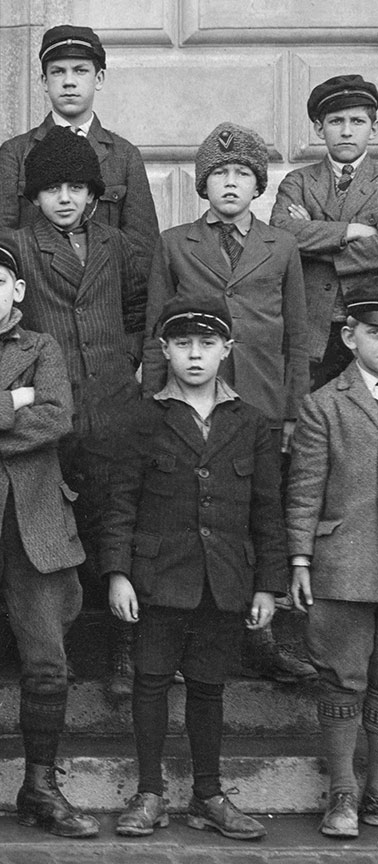
CO Hultén Final selection 1937–1959 – Part I
Viewing March 19 – 22, Berzelii Park 1
Open 11 am – 5 pm
No collection can be made from Arsenalsgatan 2. From Wednesday, March 27, you can collect your item from Västberga Allé 3.
To the auction
To PDF catalogue
The themed auction CO Hultén Final selection – part II will return from August 23 to September 1.
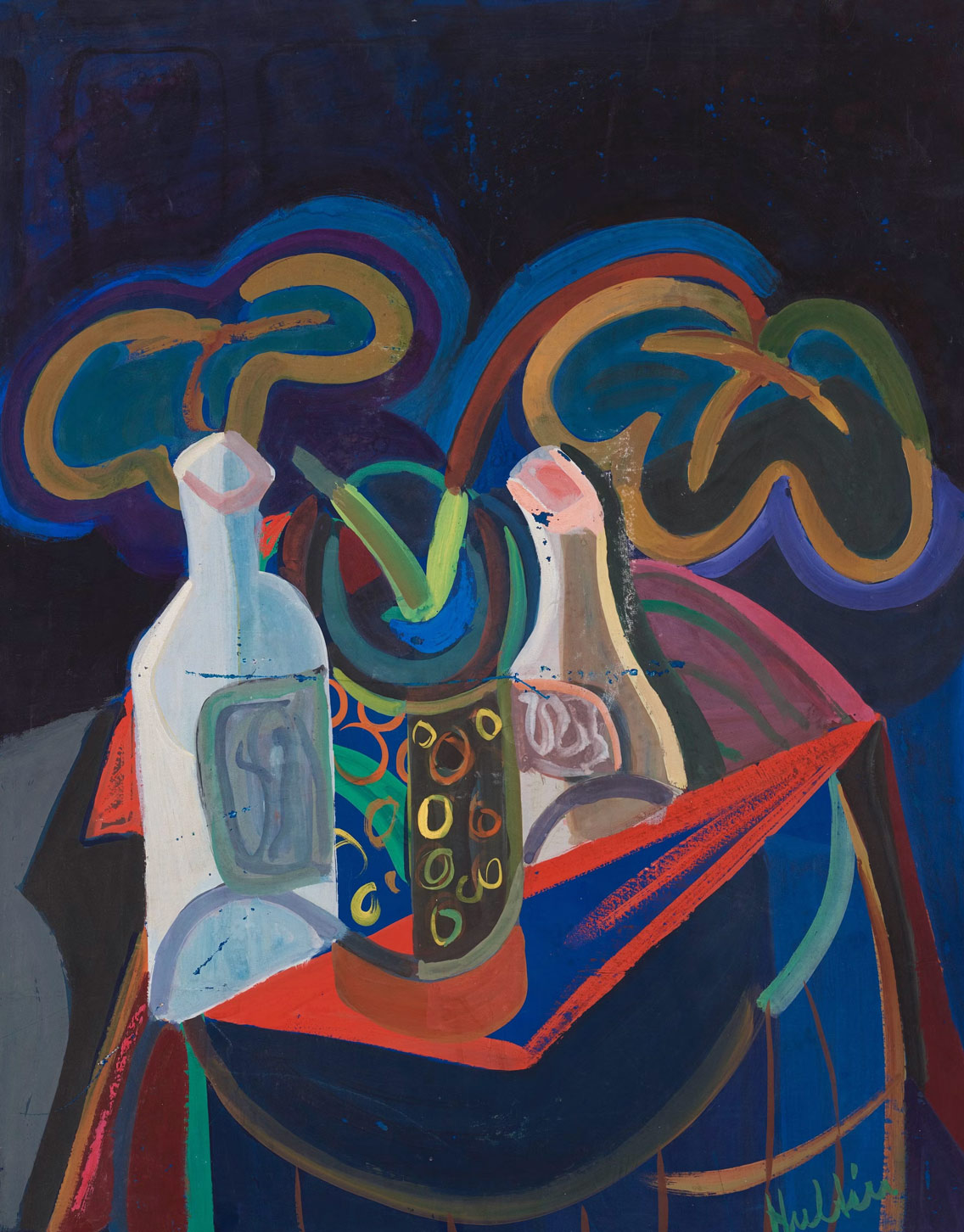
› CO Hultén, "Stilleben med flaskor och glas". Executed in 1937. Gouache on paper panel 69 x 55 cm.
Bid on works by CO Hultén
Requests & condition reports Contact specialist

Stockholm
Lena Rydén
Head of Art, Specialist Modern and 19th century Art
+46 (0)707 78 35 71
